| Animal |
Movie |
Description |
Meller's Chameleon (Chameleo melleri) |
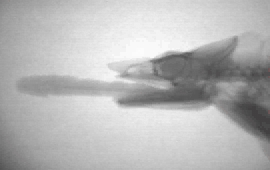
| Adult Chameleo melleri shooting its tongue at a cricket. Small metal markers were inserted into the relevant muscles and bony elements
to help quantify the movements. Note the distinct movement of the hyobranchium (tongue skeleton)during projection and retraction. Movie recorded in
collaboration with Jay Meyers.
This movie was filmed at 500 fps and slowed down considerably (12mb). |
Black and White Tegu (Tupinambis merianae) |
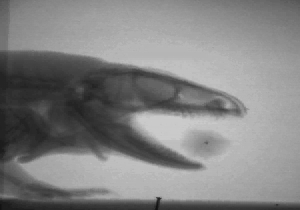
| Adult tegu feeding on a piece of banana. A small radio-opaque marker has been inserted into the food item
to help visualise its movements. Note the clear inertial transport cycle followed by a mixed lingual/inertial cycle
somewhat later. Movie recorded in collaboration with Keith Metzger. Filmed at 250 fps but slowed down (4.5mb) |
Banded water snake (Nerodia fasciata) |
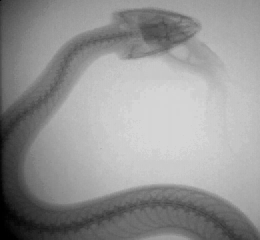 |
Adult watersnake feeding on a small goldfish. Note how the animal uses unilateral jaw movements to transport
the fish through the oral cavity. Once the fish enters the oesophagus cervical bending moves the fish further down
the alimentory tract. Movie recorded in collaboration with Shawn Vincent. Filmed at 250 fps but slowed down (6mb). |
Clownfish (Amphipirion clarckii) |
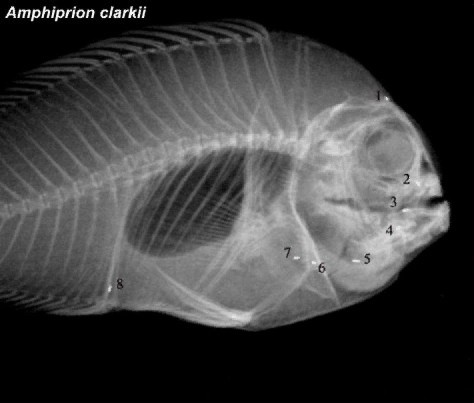 |
Male Amphipirion clarckii producing sounds generated by the collision of the teeth after rapid release of tension in the sonic ligament.
Note how the fish swims with its jaws (red markers) open, depresses the hyoid (blue marker) which releases the tension in the sonic ligament and makes the jaws snap shut.
The yellow marker is a neurocranial marker. Movie recorded in collaboration with Orphal Colleye and Eric Parmentier (U. Liege). Filmed at 500 fps but slowed down (6.2mb). |
Egg eating snake (Dasypeltis scabra) |
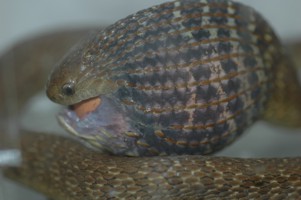 |
Egg eating snake crushing a chicken egg. Note how the enlarged ventral projections of the cervical vertebrae (hypapophyses) are used to pierce the egg membrane.
The egg shell is typically broken by the time the egg has reached the position of the enlarged hypapophyses. You may have to play teh movie a couple times to get yourself
oriented. The movie may play erratically in some players due to its large size. Movie recorded in collaboration with Jonathan Brecko (U. Antwerp). Filmed at 250 fps
but slowed down (34mb). |
Tuatara (Sphenodon punctatus) |
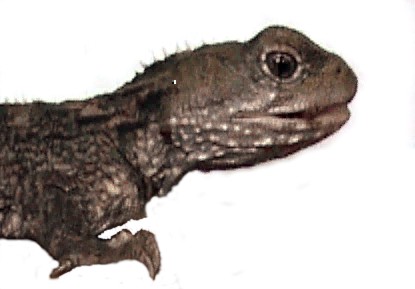 |
Juvenile tuatara capturing and eating a mealworm. Note how the animal uses its tongue to capture the mealworm. Once in the mouth, watch closely to see the lower jaw
slide forward after the jaws have been closed. This movement is unique to Sphenodon among lepidosaurs. Movie recorded in collaboration with Vicky Schaerlaeken (U. Antwerp)
and Callum Ross (U. Chicago). Filmed at 50 fps (9.2mb). |